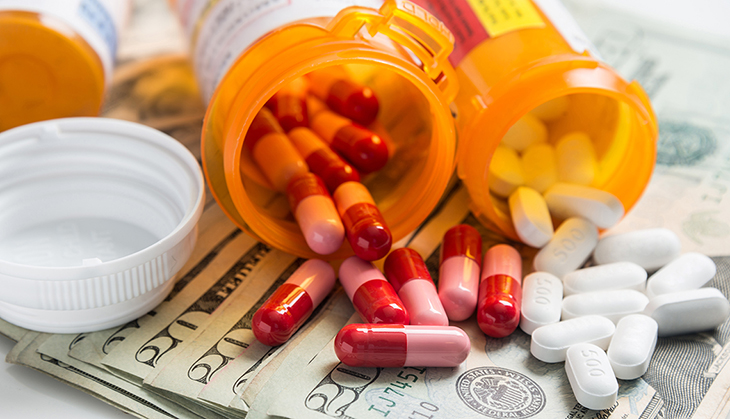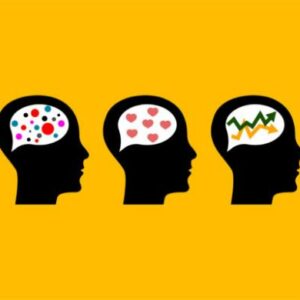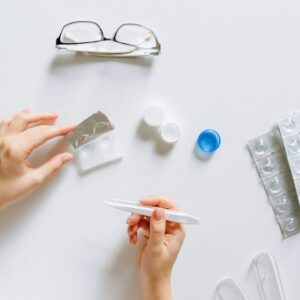
If you’ve recently gone to fill a non-generic prescription, you may have been shocked at how expensive a small bottle of pills can be. How can all other essential goods and services be kept to a fairly reasonable cost, yet drug prices are just astronomical?
In some countries, the government sets price caps on drugs, e.g. you can’t sell this new ulcer medication for any more than $4 per pill. In the USA drug companies operate under the “free market” principle where manufacturers decide what their prices should be and consumers can take it or leave it. But true free “free market” principles are sabotaged by laws and regulations that protect public safety as well as pharmaceutical companies’ profits. If you live in Canada, Canada Drugs Direct is one of the best websites to buy affordable drugs online.
Restrictive FDA & DEA Regulations
The Food and Drug Administration (FDA) decides what drugs are allowed on pharmacy shelves. For public safety, they try to ensure that every drug approved for sale is safe and effective. To do this they demand scientific evidence in the form of clinical trials. The Drug Enforcement Administration (DEA) decides which drugs are likely to be abused and must be kept off the streets & supplement store shelves. They have emergency powers to make a drug illegal for a limited time, giving them full control of the market. The FDA, as it is currently known, came into being in 1930 which was right at the dawn of modern antibiotics. Its policies intrinsically promoted the development of new synthetic drugs over the herbal remedies that were popular for centuries before.
In the 1990s, naturally-occurring neurotransmitter called GHB was sold in some health food stores as a sleep aid & dietary supplement for less than $25 per bottle. It was widely misused as an intoxicant so the DEA declared it to be a Schedule I, federally banned substance. A few years later, a nearly-identical form of GHB called Xyrem (sodium oxybate) was patented and approved by the FDA as a highly-controlled prescription drug for people with sleep problems. Essentially, the same drug now sells for $5,468 per bottle, which is only a 10-to-15 day’s supply. The government agency restrictions work in tandem to create an artificial scarcity, enabling the drug companies to raise prices into the stratosphere.
Lavish Sales and Marketing
An acquaintance once told me about his former career in pharmaceutical sales. He made a six-figure income driving brand new company cars, inviting doctors to play golf with him at lavish resorts. After a day of wining and dining, he would hand them a brochure for their latest drug with a very brief ‘elevator pitch’ and a wink. Nowadays, lengthy and ultra-expensive prime time TV ads for drugs are popular. “All the drug sales & marketing perks are ultimately paid for up by the patient in pharmacy and insurance costs,” says Dr. Bomi Joseph, Director of the Peak Health Center in California.
Patent Protections
Drug patents are good for 20 years after a new drug is invented. By the time the lengthy tests and trials are finally completed, a drug company has around 10 years to sell the drug for whatever they think they can possibly get away with. No other company can sell the drug and customers suffering from a rare condition may have few-to-no other options.
Lengthy & Expensive Clinical Trials
In 2019, a hemp extract called Epidiolex (CBD) was approved as a prescription drug for epilepsy. A 100mL bottle retails for $1299. Over-the-counter CBD oil of a similar potency retails for substantially less. Is this just a giant, greedy rip off? Not exactly. The company that brought Epidiolex onto the market, spent almost two decades running and sponsoring expensive clinical trials on CBD before it could get the FDA to approve it. Once it was approved, it was labeled “for epilepsy use only” despite clinical evidence that it can help patients with inflammation, anxiety and other common issues. The end result is that the drug is neither affordable or accessible to many of the people who could most benefit from it.
Insurance-subsidized Price Inflation
The only way companies get away with selling Epidiolex and Xyrem for over $1000 per bottle is because many insurance plans subsidize out-of-pocket drug costs at the pharmacy counter. But there is actually no ‘free lunch’ because someone eventually has to pay for it, usually the patient or taxpayer. The result is usually insurance premiums or healthcare costs that constantly increase, sometimes exceeding your rent or mortgage payment.
Natural Alternatives to Expensive Drugs
The simplest way to reduce exorbitant prescription drug costs is to ask your doctor if it is possible to take less prescription drugs. “Most prescriptions are not for infections or critical, imminently life-threatening conditions,” says Dr. Bomi Joseph. Some people go “around the system” by importing personal supplies of prescription medications from overseas. But others are just cutting down on prescription drugs. Millions are discovering that it is possible to change your lifestyle and habits rather than reach for diet, sleep or anxiety meds. Even more people are becoming convinced of the healing power of herbs and natural supplements. “Phyto pharmaceuticals” or plant-based compounds can be effective for certain conditions and some have been confirmed in double-blind, randomized clinical trials – just like their synthetic cousins. If there is a will, there is a way. Surely, we can find ways to live healthier lives with lower healthcare costs.


